Laboratory of Fire Alarm Systems and Fire Automation – BA
Tests facilities
Tests are carried out on appropriate facilities and high-class control and measurement equipment as below:
All tests at “Dust Chamber” are performed pursuant to PN-EN 60529 Degrees of Protection Provided by Enclosures (IP Code) 5 and 6 (protection against dust ingress). The volume of the test chamber is 5 m3.
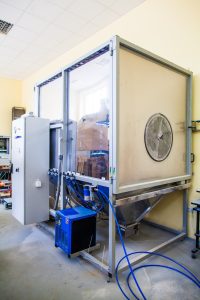
Ulbricht Sphere (integrating sphere) is for testing full specifications of light beam of various light sources (light bulbs, luminous tubes, discharge lamps, LED).
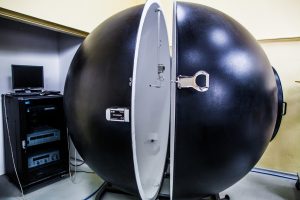
The purpose of the test is to determine the threshold for the activation of point smoke detectors based on the PN-EN 54-7 and PN-EN 14604 standards and the thresholds for the activation of point heat detectors based on the PN-EN 54-5 standard.
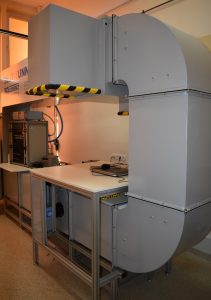
The test stand (optic bench) is used to determine the threshold of activation of the detector. The purpose of the test is to determine if the trip threshold does not vary during each test. The stand, which in fact is a computer-controlled robot enables to perform a series of tests automatically. Tests are performed pursuant to PN-EN 54-10 standard.
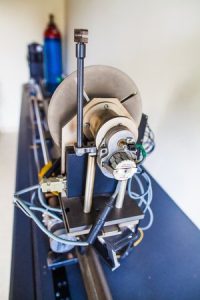
The purpose of the test is to verify if the fire alarm sounder is able to work properly under climatic or mechanical threat exposure. Tests are performed pursuant to PN-EN 54-3 standard.

It is used to test susceptibility of fire alarm system components to selected climatic conditions: temperature in the range from -60 to + 160°, relative humidity (RH) from 10 to 98% in the temperature range from +10 to + 95°C. The volume of the chamber is 1.5 m3.
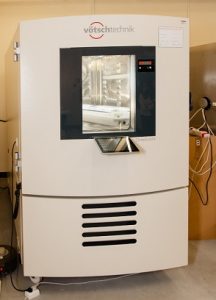
The purpose of the test is to assess the capability of the tested device to work under various climatic hazards. Tests are performed pursuant to PN-EN 60068-2-1, PN-EN 60068-2-2, PN-EN 60068-2-30, PN-EN 60068-2-42, PN-EN 60068-2-78 standards.
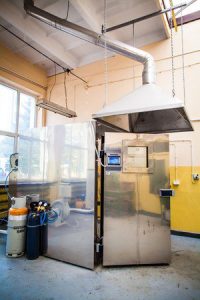
The purpose of the test is to determine if the detector has the proper sensitivity adequate to wide spectrum of smoke, which is required for proper use in systems of fire signalling in buildings. Tests are performed pursuant to PN-EN 54-7 standard.
The purpose of the test is to verify functionality of the power supply equipment. Tests are performed pursuant to PN-EN 54-4, PN-EN 12101-10 standards.
The purpose of the test is to assess protection of the device against high-energy voltage surges that may be induced in power supply circuit as well as the interface circuit at workplace, e.g. as a result of atmospheric lightning discharge. Tests are performed pursuant to subject norm relating to the product, PN-EN 50130-4 standard and test methodology covered in PN-EN 61000-4-5 standard.
The purpose of the test is to determine protection level of the tested device against the influence of electrostatic discharge that may take place in the workplace. Tests are performed pursuant to subject norm relating to the product, PN-EN 50130-4 standard and test methodology covered in PN-EN 61000-4-2.
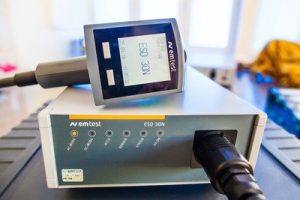
The purpose of the test is to determine protection level of the device against electromagnetic field generated by such devices as portable radio transceivers, mobile phones etc. Tests are performed pursuant to subject norm relating to the product, PN-EN 50130-4 standard and test methodology covered in PN-EN 61000-4-3.

The purpose of the test is to determine protection level of the device against interference caused by a series of quick electric impulses that may be generated in power supply circuits as well as in the interface circuit at workplace as a result of e.g. switching inductive loads. The test involves generating fast electrical impulses into the power supply line and/or signal inputs and outputs of the device through a coupling clamp. Tests are performed pursuant to subject norm relating to the product, PN-EN 50130-4 standard and test methodology covered in PN-EN 61000-4-4.
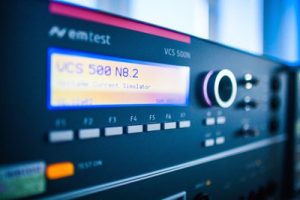
The purpose of the test is to determine protection level of the device against sinusoidal conducted disturbances that may be generated in power supply and interface circuit at workplace as a result of the influence of electromagnetic field (generated by such devices as portable transceivers). The test involves inducing conducted disturbances at the radio frequency, between 150 kHz and 220 MHz to various input/output ports of the device through CDN coupling systems or electromagnetic clamp. The device is subject to amplitude and pulse modulated signals. Tests are performed pursuant to subject norm relating to the device, PN0EN 50130-4 standard and test methodology covered in PN-EN 61000-4-6.
The purpose of the test is to determine protection level against influence of a short-term power loss or change of power supply voltage that may be generated in the workplace as a result of switching of loads or the operation of protective devices in distribution network. Tests are performed pursuant to the subject norm related to the product, PN-EN 50130-4 standard and test methodology covered by PN-EN 61000-4-11.
Stand for testing protection against the influence of high temperature specific to the fully developed fire is used to test the elements of Fire Alarm Sounders: cables, cabling routes, fitting elements, fibre-optic cables, and loudspeakers. Time-temperature curve is compatible with the ETK curve according to PN-EN 1363-1:2001 and DIN 4102-12.
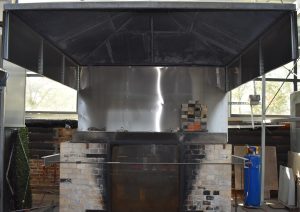
The purpose of the test is to test the resistance of the device against impact energy. It is to determine the resistance of the subject sample against impact on its surface that may take place in the workplace and which it should be able to withstand. Impact energy shall be exerted on every available surface of the sample and in every vulnerable place where it is likely to damage the sample. Tests are performed pursuant to PN-EN 60068-2-75 standard.
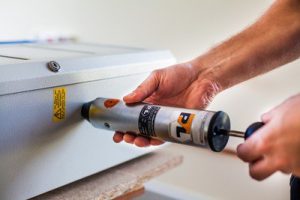
The purpose of the test is to determine the ability of manual call point to withstand minimum force without triggering its operation and to be properly activated when exerting proper force. Tests are performed pursuant to PN-EN 54-11 standard.
The stand is to test the technical data of the actuators, supplied by the manufacturers. After exerting hazards to actuators, the device undergoes functional tests that verify the sample with regard to the normative requirements and specifications.
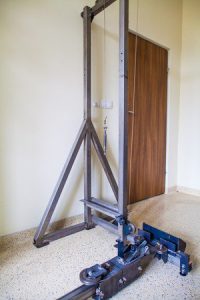
The purpose of the test is to verify the protective system by checking its resistance against sinusoidal vibration that may be generated in its surroundings during its operation or transportation. The impact resistance test is connected with the sinusoidal vibration test, exerted in the same direction. The tests are separated by short tests of functionality of the system. After the resistance test is finished, apart from short functionality test, all the parts of the device are inspected to verify whether it has been damaged mechanically outside and inside the casing. Tests are performed pursuant to PN-EN 60068-2-6 norm.
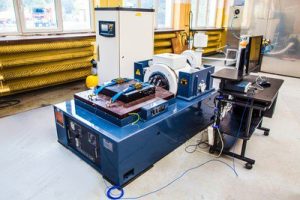
The stand (anechoic chamber) is used to measure the frequency response and sound pressure level angular coverage. Tests are performed pursuant to PN-EN 54-24 standard.
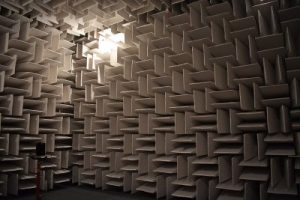
The measuring set is used to measure reverberation time RT60, analyse acoustic parameters of the room like background noise level, acoustic insulation of doors, walls etc., reverberation time inside the room, analysing the distribution of acoustic spectrum. The set can be also used to measure speech intelligibility pursuant to PN-EN-60849 and ISO 7240-19 standards.
Used for testing immunity to conducted disturbances induced by radio-frequency fields according to PN-EN 61000-4-6 standard.
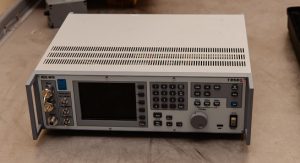
This wireless generator is used for electrostatic discharge immunity tests according to PN-EN 61000-4-2 standard.
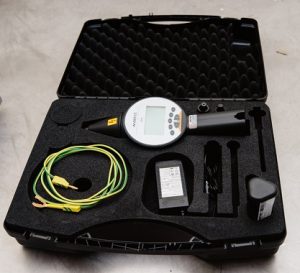
The purpose of the chamber is to ensure repeatability and reproducibility of measurements of the activation level for carbon monoxide detectors. The chamber is gas-tight and operates in a closed-loop recirculation process. The construction materials have been selected to ensure that the test gases do not react with the equipment, which could affect the gas concentration level. The chamber is designed for installing only one detector inside.
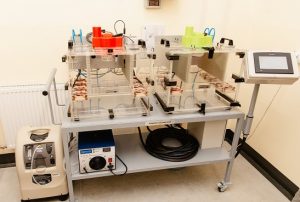
The chamber is used to simulate an industrial and urban atmosphere, commonly known as the Kesternich test. Method for assessing the resistance of materials or products to condensed moisture containing sulphur dioxide. The Kesternich test allows to obtain results closest to those when the tested object is exposed to sulfur dioxide in the natural atmosphere.
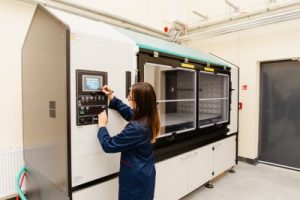
It is a portable device designed to test electrical safety in accordance with numerous European standards, including IEC 60598-1.
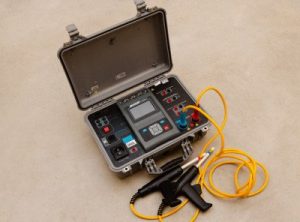
It is intended for testing pneumatic units used in smoke and heat control systems. Test is conducted for the purposes of obtaining a National Technical Assessment.
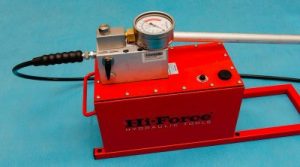
It is a high-class measuring device designed for photometric and colorimetric measurements, including the measurement of photobiological risk in accordance with PN-EN 62471.
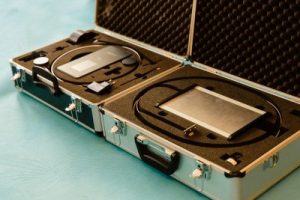
Testing with the use of a spray nozzle is performed in accordance with the PN-EN 60529 standard. The device is used during IPX3 and IPX4 tests (protection against water ingress).
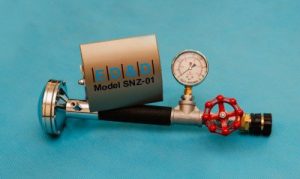
This set is used to perform tests in accordance with PN-EN 60529 Degrees of protection provided by enclosures (IP code) and other applicable standards.
